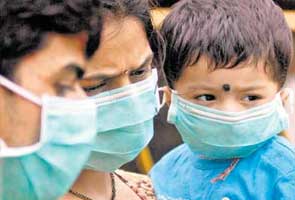Are egg yolks good or bad for your health?

egg received a bad reputation with regard to cardiovascular health, as one large egg contains approximately 187 milligrams of cholesterol.
California stores of the supermarket chain unveiled a brand new product called Beyond Eggs – artificial eggs made with ground-up peas, sorghum and other plant ingredients.
According to Hampton Creak, the company that created the product, the main motivation behind the chicken-less egg was to provide a plant-based alternative for developing countries, in order to help increase their food supply. And as global demand for eggs continues to increase, the manufacturers claim that more land and water are being used to raise chickens, therefore they wanted to find a way of reducing the environmental footprint created by egg production.
While the chicken-less egg was mostly created to address international food shortage concerns, the product is also potentially appealing to vegans, who don’t eat any animal-based products, and other consumers who are concerned that eggs are too high in cholesterol.
But are these concerns actually valid? The nutritional value of the egg and its yolk has been debated by nutritionists for years. Originally, the egg received a bad reputation with regard to cardiovascular health, as one large egg contains approximately 187 milligrams of cholesterol.
However, most research has shown that cholesterol found in foods isn’t fully to blame for increased LDL cholesterol in the body.
“Eggs are an animal product, and they do contain cholesterol,” Lisa Cimperman, a registered dietician for UH Case Medical Center, told FoxNews.com. “But actually, cholesterol in foods doesn’t affect our blood cholesterol as much as saturated fat does. Cholesterol in food, in general you do want to avoid, but it’s not necessarily the main culprit of high cholesterol.”
Compared to other animal products, the average egg actually contains relatively low amounts of saturated fats – approximately 1.6 grams per egg yolk. Additionally, various studies from the Harvard School of Public Health and the British Nutrition Foundation have found that eggs have clinically insignificant effects on blood cholesterol, and are not associated with an increased risk of cardiovascular disease.
Regardless, many consumers are still concerned over the yolk’s fatty content, so rather than eat the full egg, they often eat the egg’s albumin – more commonly referred to as the egg white. Since egg whites are considered pure protein, this dietary decision isn’t a bad move. However, some dieticians argue it’s important to consume both the egg’s fat and protein, as the combination can have positive health benefits when it comes to blood sugar.
“You want the fat, because it not only satiates you, but also slows the absorption of your food,” Laura Cipullo a registered dietician in New York City, told FoxNews.com. “So you stay fuller longer, and it won’t increase blood sugar. A lot of people have toast with just egg whites, but it’s giving them a quicker rise in their blood sugar. But if you have the yolk with it or a different form of fat like avocado, your blood sugar won’t rise as quickly, because it takes longer to break (the food) down.”
Of course, all fat must be consumed in moderation, which is why many dieticians recommend eating only a few egg yolks each week. And for patients with a history of vascular disease, keeping track of the eggs they eat each week is critical to their health. A recent study from the National Institutes of Health found that patients with an increased risk for cardiovascular disease should limit their cholesterol intake from foods to about 200 milligrams a day.
“What I typically recommend for individuals who I see who have had heart disease or have high cholesterol, I recommend they eat no more than three egg yolks per week and then as much of the egg white as they want,” Cimperman said. “Being conscious of the quantity they’re eating can be helpful.”
Despite their fat and cholesterol content, egg yolks are good source of vitamin A and iron, along with a host of other nutrients.
“Eggs, in general, are also good sources of B vitamin, thiamine is one example, and selenium, which is an antioxidant,” Cimperman said. “And folate is a good vitamin, particularly for pregnant women.”
Cimperman noted that although eggs contain many health properties, egg preparation is critical, since the way an egg is made can completely alter its nutritional value. An egg fried in butter, for example, will wreak more havoc on a person’s blood cholesterol than a hardboiled egg.
But as long as consumers are conscientious about how many eggs they consume and the way they’re consuming them, they shouldn’t be overly concerned about their cardiovascular health.
“Even if you’re eating something like a nut – that also has saturated fat in it,” Cipullo said. “You have to look at the benefits, and the benefits of eggs providing overall protein and vitamins and being easy to eat, that outweighs the fact that it has a few grams of saturated fat.”
Read more : Fox News/health










 Experts have suggested that women should aim to have children before turning 35.
Experts have suggested that women should aim to have children before turning 35. With one more person testing positive for swine flu at a local hospital, the total number of those infected by the H1N1 virus in the city has reached 52 this year.
With one more person testing positive for swine flu at a local hospital, the total number of those infected by the H1N1 virus in the city has reached 52 this year.

 “Healthy” obese women, who have given birth to a baby before, are at lesser risk than first-time mums of normal weight, according to a new study.
“Healthy” obese women, who have given birth to a baby before, are at lesser risk than first-time mums of normal weight, according to a new study. A 6-year-old Chinese boy whose eyes were gouged out by an attacker is receiving implants at a hospital in southern China after a Hong Kong eye doctor volunteered his service.
A 6-year-old Chinese boy whose eyes were gouged out by an attacker is receiving implants at a hospital in southern China after a Hong Kong eye doctor volunteered his service.
 About 5 percent of U.S. children and teens are “severely obese,” and the numbers are rising, according to a new statement from the American Heart Association.
About 5 percent of U.S. children and teens are “severely obese,” and the numbers are rising, according to a new statement from the American Heart Association.